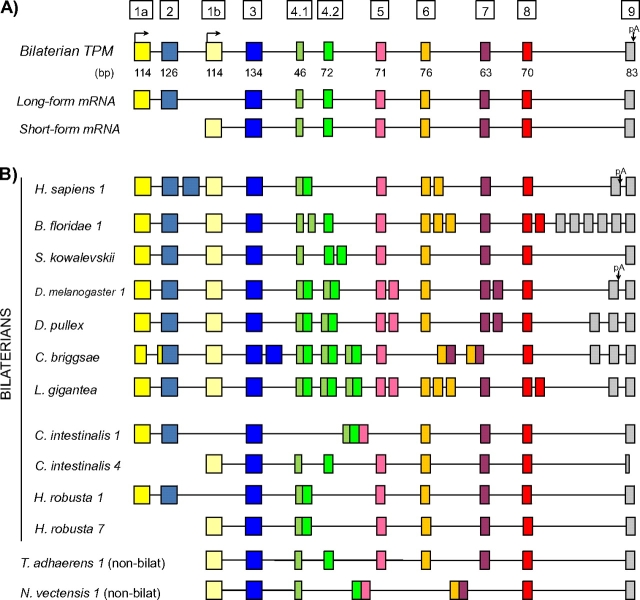FIG. 1.
TPM gene structures in metazoans. (A) General gene structures for bilaterian TPM genes. Bilaterian genes contain two promoters. Short-form transcripts are transcribed from the downstream promoter. Long-form transcripts are transcribed from an upstream promoter, contain two additional exons (1a and 2), and do not include the first exon from short-form transcripts (exon 1b). Nonbilaterian genes encode only short-form transcripts. (B) TPM gene structures from nine bilaterians and two nonbilaterians. TPM genes in most bilaterians contain copies of various exons (boxes with the same color), in contrast to the simpler genes of nonbilaterians; these tandemly duplicated exon sets (MATEs) are alternatively spliced in a mutually exclusive manner. The bilaterians Ciona intestinalis and Hellobdella robusta represent exceptions to this pattern: TPM genes in these species lack duplicated exons, and encode either long- or short-form transcripts, but not both. Boxes/lines indicate exons/introns. Homologous exons (either orthologous or paralogous) are indicated by the same color. Number after the species name, when present, correspond to the paralog represented in the figure (i.e., Homo sapiens 1 represents human TPM1). Full species names are given in the Methods.

